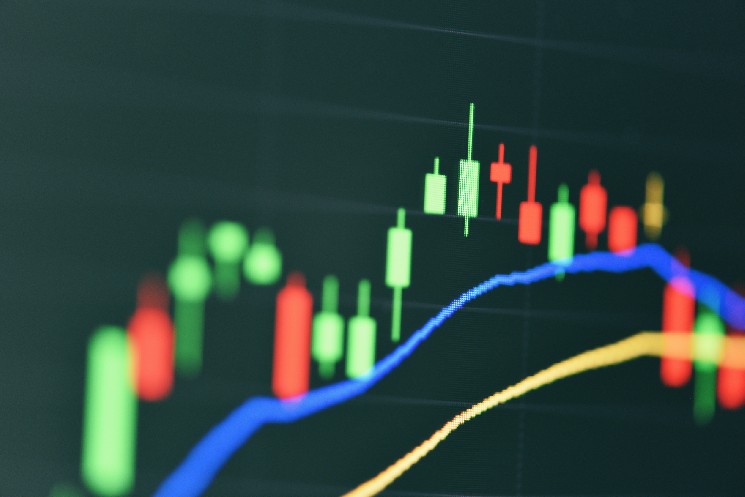Even before President Trump took office, preference for stablecoins instead of a central bank digital currency (CBDC) had been strongly signaled by the current U.S. Commerce Secretary Howard Lutnick. In the last month, both Treasury Secretary Scott Bessent and the Fed Chair Jerome Powell framed stablecoins as a de facto asset to maintain USD as the world reserve currency.
After all, a more decentralized ecosystem of tokenized dollars would be more effective at penetrating online payments than a controversial CBDC. Moreover, stablecoin companies drive demand for the U.S. Treasuries by backing their stablecoins with short-dated T-bills, gaining yield in return.
The Bank for International Settlements (BIS) confirmed this dynamic in its May report, noting that demand for short-term Treasuries, driven by stablecoins, is akin to “small-scale quantitative easing on long-term yields.” This is a boon for both the U.S. Treasury and the Federal Reserve, which is one of the main reasons why Circle Internet Group, Inc. (NYSE: CRCL) had such a successful initial public offering (IPO) in early June. Since then, CRCL stock is up 161%, currently priced at $205 per share.
Further boosted by the passing of the GENIUS Act in the Senate mid-June, where is Circle Internet Group heading next?
Greater Integration with Merchants
After forming a strategic collaboration with fintech company Fiserv, Inc. (NYSE: FI) on June 23, Circle accelerated the adoption of its stablecoin USDC for digital banking. Fiserv covers a wide range of payment processing for banks, insurance companies, merchants, retailers, credit unions, and securities brokerages.
Although Fiserv plans to launch its own stablecoin FIUSD, the company will take advantage of Circle’s existing infrastructure, the Circle Payments Network.
At the end of June, Circle applied to become a national trust bank to form First National Digital Currency Bank, N.A. Given the company’s institutionalized status, it is likely that the Office of the Comptroller of the Currency (OCC) will approve the request.
Unlike regular commercial banks, national trust banks are focused on trust services, such as asset management, custody, estate planning and acting as executor on the behalf of trustees. This attracts high-net-worth individuals and institutions, but is also a necessary step to prepare for the upcoming GENIUS Act becoming law.
Under this stablecoin legislation, non-bank entities regulated by OCC can issue stablecoins, but practical operations would require them to act as federally regulated trust institutions. A national trust bank does exactly that, without having to engage in classic banking activities such as savings and loans.
How Circle’s Economics Work
Circle picked BlackRock to hold its short-dated U.S. Treasuries and overnight repurchase agreements, within the Circle Reserve Fund. These assets serve as the main backing for USDC stablecoin in order to maintain a 1:1 ratio to USD and withstand market volatility. As of July 7, Circle Reserve Fund holds $53.16 billion with a 30-day yield of 4.14% at an average maturity of 11 days.
Within the wider crypto ecosystem, USDC has a market cap of $61 billion, behind the dominant stablecoin USDT from Tether at $159.5 billion. Although USDT is prevalent for frictionless payments via Tron’s blockchain network and has 62% overall stablecoin dominance, USDC is not far behind.
Ethereum, the largest smart contract blockchain, has $38 billion USDC in circulation, followed by Solana at $7.6 billion and Base at $3.7 billion. Although Circle doesn’t earn revenue from on-chain activity, the company benefits the more USDC is trusted. And the more this confidence increases, Circle’s reserve pool deepens, boosting interest earnings in the process.
For the full year 2024, Circle earned $155.7 million in net income, with a total revenue of $1.7 billion. In Q1 2025 alone, Circle reported $64.8 million net profit, with revenue of $579 million. Year-over-year, the company’s operating income grew 77% to $92.9 million.
Circle’s Expected Profits
Based on seven analysts’ estimates, the average Circle revenue forecast for the quarter ending September is $661.73 million, with the year ending in $2.59 billion total revenue, suggesting a 55% YoY growth.
However, beyond 2025, the primary factor in Circle’s growth is the Federal Reserve. If Fed Chair Jerome Powell decides to cut interest rates, as President Trump wants, Circle’s revenue from reserve yields would drop significantly.
Last Tuesday, Powell already confirmed that interest rates would be lower this year if it weren’t for President Trump’s tariffs.
“In effect, we went on hold when we saw the size of the tariffs and essentially all inflation forecasts for the United States went up materially as a consequence of the tariffs.”
The Fed Chair Jerome Powell at European Central Bank (ECB) forum in Portugal
This could be offset by greater altcoin engagement, but it is unlikely. Moreover, Circle faces multiple stablecoin competitors. If the GENIUS Act becomes law, more companies are likely to join the stablecoin ecosystem, in addition to the aforementioned Fiserv. Case in point, The Wall Street Journal reported mid-June that both Walmart and Amazon are exploring issuing their own stablecoins.
In short, while Circle reaped the institutional stablecoin momentum, this is unlikely to follow through at the same pace. In turn, the present price level of $205 per share may be the high point moving forward.
Disclaimer: The author does not hold or have a position in any securities discussed in the article. All stock prices were quoted at the time of writing.



